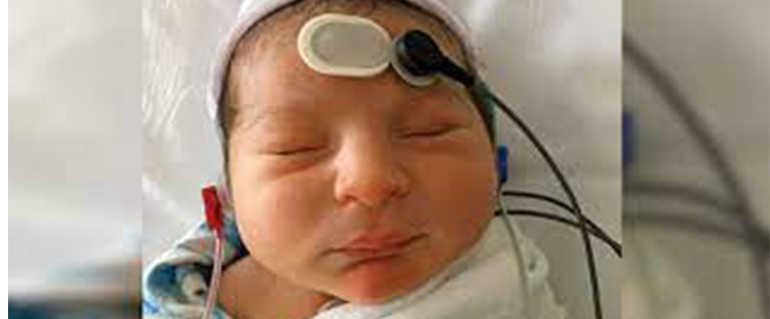What Is Neonatal Hearing Screening & How Does It Work?
Neonatal hearing screening is a procedure for the detection of hearing impairment in infants. It is done by measuring the sound level of the infant’s cry and comparing it to a standard. This process helps to identify children who are at risk for hearing loss before they reach school age. Neonatal Hearing Screening has been widely used since 1969, when it was introduced as a way to detect deafness in children before they start school.
The technology has evolved over time, but its basic function remains the same: use sound to screen for deafness in infants. .The hearing screen is designed to detect a continuous tone of about 65 dB. This tone is delivered through a loudspeaker near the infant’s face. The infant listens for the sound and their brain translates this sound into sounds that they hear through their ears. It is then easy for health professionals to measure the intensity of the noise, which will be compared to a standard hearing threshold level based on age and sex.
Neonatal Hearing Screening – Why are Doctors so Concerned about It?
The ability to detect hearing problems in babies is a major concern for doctors because it can lead to a range of complications, including the need for invasive surgery. Neonatal hearing screening is the process by which an otologist (a doctor who specializes in diagnosing and treating ear disorders) uses a set of tests to screen for hearing loss in infants. The tests are performed while the baby is sleeping or sedated. It’s important because it can detect hearing problems early enough so that they can be treated before they become more complicated.
Doctors are concerned about neonatal hearing screening because it has been shown to have some risks associated with it, such as false positive results and false negatives, which lead to unnecessary testing and treatment. .False positive results occur when the baby is diagnosed with a hearing problem when no real problems are present. False negatives are when the baby goes without a diagnosis because a real problem isn’t detected. To make matters worse, there is no way to predict which babies will have false positives or false negatives, so it’s impossible to determine how likely one of these scenarios is to happen.
Common treatable risks of neonatal testing-
Neonatal hearing screening has been studied in humans for more than 50 years and has been shown to provide accurate information about hearing problems in infants up to age 3 years old. The most common risks associated with neonatal testing have been reported to be ringing in the ears, which is a sign of fluid buildup (meningitis). Unexplained fever and seizures are also some of the more common risks.There are many things that could cause your baby’s symptoms like your baby has an ear infection that may be bacterial or viral, or even both. There is no way to know right now without doing a culture on your child’s eardrum and getting antibiotics if needed. Your doctor will see how they respond to treatment and will help you decide whether further testing is necessary.
Neonatal hearing screening is a routine process that can prevent many devastating conditions in children. It is crucial to provide proper care and support to the newborns. Neonatal hearing screening has been found to be an effective method for preventing deafness and other conditions in children. This procedure provides doctors with an opportunity to identify any potential problems before they become serious, which helps them take preventive measures at an early stage of life.
How can Neonatal Hearing Screening Prevent Deafness?
Neonatal hearing screening is a process that can be used to detect any potential hearing problems in children under the age of 3 months. This test helps to ensure that children’s auditory systems are healthy as well as identify potential systemic or genetic disorders. The timing of this process depends on the necessity presented by the parents and doctor. Some tests are done when there are concerns about an underlying condition like Down Syndrome, while other tests may be conducted if the child is born prematurely or has other signs of developmental delay. No matter what risks are present, it is always important to conduct a screening process to prevent any negative consequences.
What Kinds of Tests are Necessary to Perform a Neonatal Hearing Screening?
Screening for hearing problems in newborns is a routine test that is performed by pediatricians. It helps to prevent the development of ear infections and other conditions. A screening test is a simple way to determine whether a child has a hearing problem. In the case of neonatal screening, it can be performed on infants who are less than three weeks old.
The Otoacoustic Emission Test is one of the quick, easy and reliable tests that is performed during the neonatal hearing screening. It involves putting a probe in your baby’s ear to measure the intensity of the sound waves in his or her external ear canal. This test can give an accurate result within seconds, and therefore make it a good tool for screening purposes.
The Audiogram is another type of test which will look at both levels of hearing as well as how they are functioning together to determine if there are any problems with the baby’s hearing abilities. The audiogram measures how hearing sounds are processed in your child’s ear. Your child will be given an audiogram during the newborn hearing screen, which is usually performed in the first few days after birth. This test will allow them to look at your baby’s ability to hear low and high frequencies and give you an idea of whether or not there are any problems with their ears.
The most commonly used test is the tympanomastoid air pressure test which measures hearing acuity by comparing the loudness of high-pitched tones and low-pitched tones. It is also possible to conduct a vibration perception test which evaluates the ability to detect different frequencies of sound. The screening is conducted using a pure tone audiometry test, also known as air-bone gap testing. The results of this test are then communicated to parents who then decide whether or not a child should receive further hearing testing and/or treatment.
How Long Will the Testing Take?
The NHS hearing test for infants is a quick process that will take about 10-15 minutes.The latest guidelines for testing revised the recommended minimum age to be tested from 2 months old to 6 months old and also the minimum age of language acquisition to be tested to 6 months old. The guidelines also recommend that any child who doesn’t pass the hearing test can be referred for further testing, as well as an audiology referral should they have any concerns with their current hearing status.
















